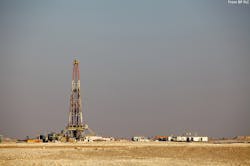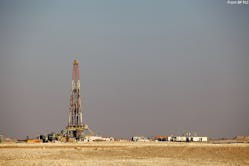BP PLC and Oman Oil Co. have signed a heads of agreement with the government of Oman to amend the Oman Block 61 exploration and production sharing agreement (EPSA), extending the block’s license area and enabling further development of the major Khazzan tight gas field.
BP operates Block 61 with 60% interest and Oman Oil holds the remaining 40%.
The extension will add 1,000 sq km to the south and west of the original 2,700-sq-km Block 61, and allow a second phase of development, accessing more resources in the area that have been identified by drilling activity within the original block.
Further development is subject to final approval of the government of Oman and BP. Both approvals are expected in 2017.
BP says the Khazzan reservoirs in Block 61 represent one of the Middle East’s largest unconventional tight gas accumulations. “Khazzan is a major resource with the potential to produce gas for Oman for decades,” said Bob Dudley, BP Group chief executive.
Combined plateau production from Phases 1 and 2 is expected to total 1.5 bcfd, equivalent to 40% of Oman’s current total domestic gas production.
The Phase 1 project, sanctioned in December 2013, remains on schedule for startup in late 2017. Subject to completion of the agreements and final sanction, the new Khazzan Phase 2 project will come on stream in 2020.
BP in 2014 handed out billions of dollars in contracts for the project covering drilling work (OGJ Online, Oct. 2, 2014), and process and infrastructure work (OGJ Online, Feb. 20, 2014; Mar. 4, 2014). The firm had previously said it was mulling investment of $15 billion over a 10-year period for full-field development of Block 61 fields (OGJ Online, June 20, 2011).
The two phases are expected to produce 1.5 bcfd through development of 10.5 tcf of recoverable gas resources, involving construction of a three-train central processing facility with associated gathering and export systems and drilling 325 wells over a 15-year period.
Improved reservoir performance, drilling efficiencies, and other improvements have reduced the well count by 100 wells from the original Phase 1 plan, BP notes.


